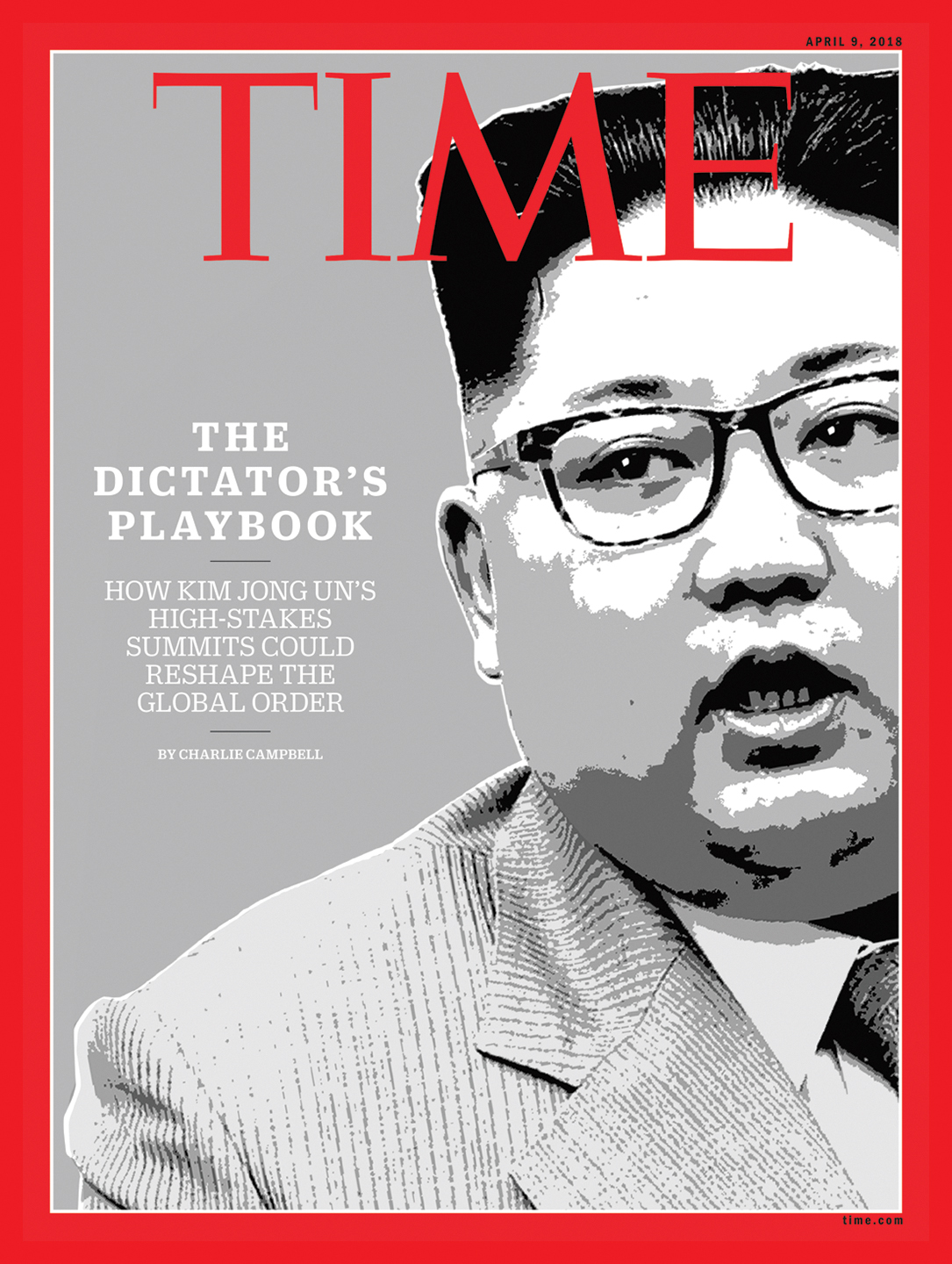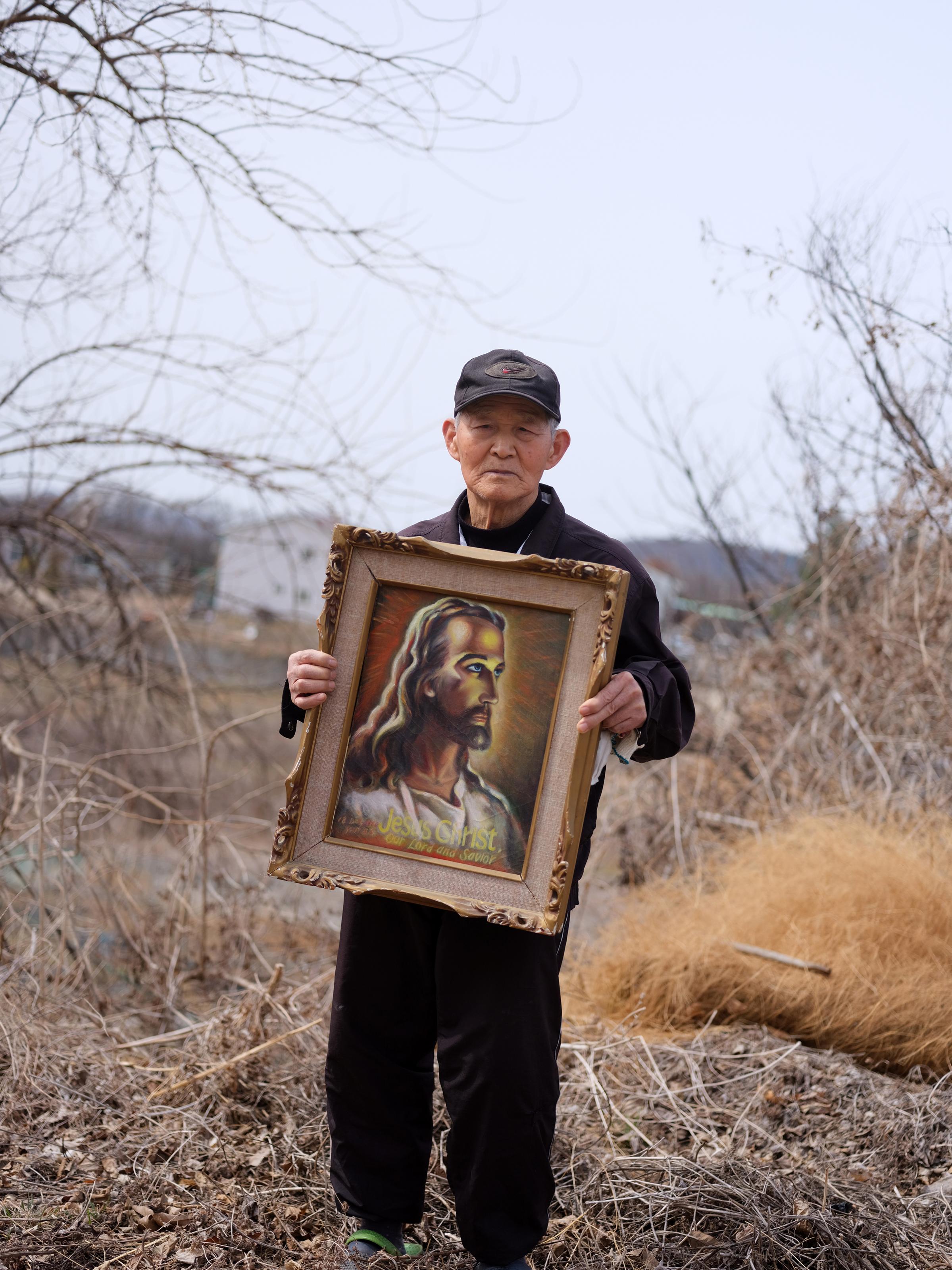
Growing up in Hyesan, North Korea, a small industrial city near the border with China, Hyeonseo Lee heard plenty about Americans. But never without a modifier. “It was always ‘American bastards’ or ‘American aggressors,'” she says.
When Lee was 13, her school made the obligatory pilgrimage to the Sinchon Museum of American War Atrocities. There, Lee and her classmates were told of the 35,000 civilians North Korea says were massacred by U.S. troops at the start of the Korean War in 1950. She was shown where 100 North Korean mothers were separated from their newborns as they cried out for milk. And she was brought to the room where the heartless Americans supposedly fed the babies gasoline instead, before flinging in a match.
“I didn’t think Americans were human beings,” says Lee, who fled North Korea in 1997 and wrote The Girl With Seven Names about her experience. “I thought they were animals that we had to kill off. That was the brainwashing from age 4.”

Hatred of the U.S. is a founding principle of the North Korean regime. The revolutionary guerrilla Kim Il Sung seized power in 1948 and built the state ideology around the nebulous concept of juche, which is loosely defined as ultranationalist self-reliance. His descendants have maintained their control in part by instilling the belief that other nations are plotting North Korea’s destruction with U.S. backing.
To guard against that threat, North Korea began developing a nuclear-weapons program in the early 1990s with the aid of former Soviet scientists. The regime’s armament has continued in fits and starts, despite international efforts to contain it, and today includes 2,500 to 5,000 tons of chemical weapons and 200 launchers that can fire short-, medium- and long-range ballistic missiles. In late November, North Korea tested an ICBM that flew 10 times higher than the International Space Station and is theoretically capable of hitting any American city. “The entire area of the U.S. mainland is within our nuclear strike range,” Supreme Leader Kim Jong Un said after the missile’s test.
In response to the escalation, U.S. President Donald Trump called Kim “a madman” on Twitter and derided him as “Rocket Man” in a speech to the U.N. The White House has repeatedly refused to rule out a military response. “North Korea is the biggest threat to all of humankind as far as I’m concerned today,” Terry Branstad, the U.S. ambassador to China, tells TIME.
This would seem an unlikely moment for rapprochement. The 34-year-old dictator has never participated in formal negotiations with any nation, let alone the hated U.S. Yet after thawing relations with South Korea for the Winter Olympics, Kim made a stunning surprise visit to Beijing in his armored train at the invitation of Chinese President Xi Jinping on March 25–28–his first foreign visit since taking power in 2011–and is poised to sit down with South Korean President Moon Jae-in in April. (North Korean state media reports that Xi has also agreed to visit Pyongyang.) All of that is a prelude to Kim’s planned summit with Trump in May.

How could two of the world’s most bombastic leaders go, in the space of a few months, from trolling each other to displaying the mutual respect implied by a personal meeting?
For Kim, the short answer is money and security. Three new rounds of U.N. sanctions since Trump took office have cut off key revenue streams–chiefly exports of coal, labor and textiles–for his isolated and struggling economy. He also knows North Korea would lose any real conflict, even if it’s capable of exacting a horrendous toll in the process. Experts says it’s telling that Kim has put denuclearization on the table for the first time and pledged a moratorium on weapons tests.
The U.S. and its allies have various motivations for engaging with Kim, but all would benefit from neutralizing a rogue nuclear state. South Korea could face obliteration from attack from across its border, while China and Japan–the world’s second and third largest economies–are also at imminent risk.
Geography, meanwhile, no longer affords the U.S. the buffer it once did. Experts say North Korea could potentially strike the American mainland with a nuclear electromagnetic pulse that would wreak havoc on power grids, utilities, infrastructure and any industry dependent on them. Pre-emptive action, however, risks upsetting Washington’s alliances in East Asia, potentially strengthening China. “The U.S. would be relegated to a regional power like Russia at the end of the Cold War,” says Daniel Pinkston, an East Asia expert at Troy University in South Korea.
With the stakes so high, TIME spoke with defectors from North Korea, negotiators and others from both sides of the DMZ and the bargaining table to better understand Kim’s motivations, Trump’s aims and the potential consequences of their summit–if it actually happens.
Over platters of iced whitefish, kimchi and spiced mackerel at a restaurant in Seoul’s tony Gangnam neighborhood, the highest-ranking North Korean official to defect during Kim’s reign offers guarded insight into his former leader’s mind-set. Clive, who is using an alias to protect his safety, says he defected because a transgression by a close relative meant he was also facing a one-way ticket to the gulag.
Clive believes Kim may genuinely want to mend relations with Washington in order to improve the livelihoods of his 25 million subjects, and he suggests that Kim might agree to denuclearize in exchange for a mutual defense treaty signed by Pyongyang’s four influential neighbors–Russia, China, South Korea and Japan–that’s ratified by the U.N. and also passed by an act of Congress and signed by Trump. He says that under such a deal, Kim might not even object to the U.S.’s keeping in place the 28,500 troops currently stationed in South Korea.
Such a pact would require reaching across a dense thicket of historical grudges and mistrust, but Kim, at least, has a monetary incentive to try. A thaw with Tokyo in particular could lead to a much needed windfall. Pyongyang has never received compensation for Japan’s human-rights abuses during its occupation of the peninsula from 1910 to 1945. In 1965, South Korea received $800 million in grants and soft loans from Tokyo under a similar deal, and a 2001 congressional research report suggested the North could expect $5 billion to $10 billion.
A multicountry deal of the sort Clive envisions would face steep challenges. Russia, China, South Korea and Japan would have to set aside large and competing interests for it to win U.N. backing. That, in turn, has the potential to complicate its chances in Congress, where conservatives resent following the U.N.’s lead. And Trump is generally averse to complex multilateral deals.

Kim’s furtive trip to Beijing further muddies the waters. The visit, which included a great deal of pomp despite being kept under wraps until its end, suggests that Kim may need China’s aid in negotiations with Trump–and that Xi could use that as leverage for trade concessions on recent tariffs with the U.S. in any deal.
The U.S. and South Korea, meanwhile, announced an amended trade pact on March 27 that expands the market for American automakers in South Korea while limiting the country’s steel exports to the U.S. The revised deal was reportedly reached in order to avoid open disagreement between the allies during the summits.
Other obstacles to a nuclear deal are more prosaic. According to Jim Walsh, a security expert at the Massachusetts Institute of Technology who has discussed nuclear issues with North Korean officials on behalf of the U.S., negotiators are typically direct, but problems arise if an approach seems to counter a regime directive. “They may say, ‘We can’t talk about denuclearization,'” says Walsh, “and so you have to change the language and say, ‘Let’s talk about nuclear security’ or ‘nuclear energy’ and find another way in.”
Personal chemistry between Kim and Trump is another wild card. Trump has been far more indulgent of authoritarian leaders than his predecessors, offering congratulations to Russian leader Vladimir Putin on his election victory and praise for Xi’s dismissal of China’s presidential term limits. To Trump’s defenders, the absence of condemnation reflects a dealmaker’s acumen. “I see some common traits between Trump and Kim Jong Un,” says political scientist Cheong Seong-chang of South Korea’s Sejong Institute. “They talk tough, but they’re pragmatists.”
Of course, that doesn’t mean the two men will be able to broker an accord that settles more than 50 years of strife. Among the many challenges to reaching and upholding any deal is the threadbare State Department under Trump. South Korea still does not have a U.S. ambassador. Joseph Yun, the top U.S. diplomat dedicated to North Korea policy, retired in February. Summits normally follow a series of lower-level meetings, where policy specialists thrash out parameters in painstaking, coffee-soaked sessions. Trump and Kim are hanging everything on a front-loaded meeting. “If you have some big blowup, where do you go?” asks a former top U.S. diplomat, who asked to remain anonymous so he could speak candidly. “Diplomacy is effectively eliminated.”
Were an agreement somehow reached, it would lead to another thorny question: how to verify it. There is no way to locate all of North Korea’s nuclear weapons, and experts think the regime is likely to keep some hidden. “The best hope is 80% to 90% denuclearization,” says Cheong.
The U.S. apparently has no intelligence sources in North Korea nor any way to illicitly access computer records in the Hermit Kingdom. Kim’s regime is believed to have a network of underground military facilities the knowledge of which is dispersed among different military leaders.
Should negotiations falter and Kim and Trump return home empty, Clive’s prediction is bleak: “North Korea will put more pressure on the U.S. through nuclear proliferation.” In other words, Clive predicts North Korea will sell more of its nuclear and ICBM technology to rogue states or terrorist and criminal groups to boost its sagging economy and gain further bargaining power.
Weapons trading has always been a key way for North Korea to acquire foreign currency. From 1987 to 2009, 40% of the 1,180 units of ballistic missiles that were traded around the world were exported by North Korea, says Kwon Yong-soo, a former professor at Korea National Defense University. Defector debriefing documents reviewed by TIME detail how dozens of North Korean Scud missiles were sold to Iran for $90 million per unit in the 1980s, and Pyongyang’s military scientists were paid up to $15,000 per month for maintenance work in Syria, Iran and Czechoslovakia. When Israel bombed a suspected Syrian nuclear reactor in 2007, one former North Korean missile scientist told TIME that he recognized a colleague dead in the debris.
“Now is the time to halt the testing to stop the North Koreans building 50 nuclear-armed ICBMs,” says Daryl G. Kimball, executive director of the Arms Control Association. “Because then the problem becomes much more difficult.”

Yoon Seok-sahn’s vegetable patch doesn’t appear to be of much geopolitical significance. Yet the small plot where the sprightly 86-year-old grows corn, beans and cabbages in South Korea’s Tongilchon village lies snug against the DMZ and is just a few miles from the likely location of Kim and Trump’s summit.
The division of the Koreas remains a personal tragedy for Yoon too. Just five miles across the DMZ looms North Korea’s Deokmul Mountain, where Yoon’s maternal uncle lived. “My mother used to take my hand, and we would walk over to his house for dinner,” says the retired army major. “I don’t know if I have any nephews or nieces living there today. I’d be desperate to meet them.”
If Kim dangles the prospect of Korean reunification, as some experts predict, there is a chance Yoon will find out. “I think Kim Jong Un will offer the reunification of the Koreas,” says Choi, a former North Korean intelligence officer who asked to be identified by his last name. That wouldn’t mean the end of North Korea as a state, but a symbolic fusing in name, with the countries ramping up cooperation. An agreement could look similar to China and Hong Kong’s “one country, two systems.”
Cooperation across the DMZ may be Kim’s primary goal, says Choi. Smoothing relations with South Korea will make it harder for Washington to unleash sanctions or a military strike against the North. But that would be highly divisive for South Koreans, who distrust Pyongyang while also being wary of U.S. escalation given their vulnerability. “Kim Jong Un wants to drive a wedge in the South Korea–U.S. alliance,” says Choi, “to use South Korea as a human shield.”
For Yoon and his 500-odd fellow Tongilchon residents, the front line is a familiar position. Every month, the village school’s 80 students practice racing down to the nearby nuclear shelter, where cupboards of foil-wrapped gas masks are stacked. But the current thaw has already brought some benefit. Less North Korean propaganda has been bellowing across the DMZ, interrupting everyone’s sleep. “I feel good about the talks,” says Yoon. “They will help ease tensions and prevent war,” he says, before adding, “at least for a while.”
–With reporting by STEPHEN KIM/SEOUL and PHILIP ELLIOTT/WASHINGTON
More Must-Reads from TIME
- Donald Trump Is TIME's 2024 Person of the Year
- Why We Chose Trump as Person of the Year
- Is Intermittent Fasting Good or Bad for You?
- The 100 Must-Read Books of 2024
- The 20 Best Christmas TV Episodes
- Column: If Optimism Feels Ridiculous Now, Try Hope
- The Future of Climate Action Is Trade Policy
- Merle Bombardieri Is Helping People Make the Baby Decision
Write to Charlie Campbell / Tongilchon, South Korea at charlie.campbell@time.com